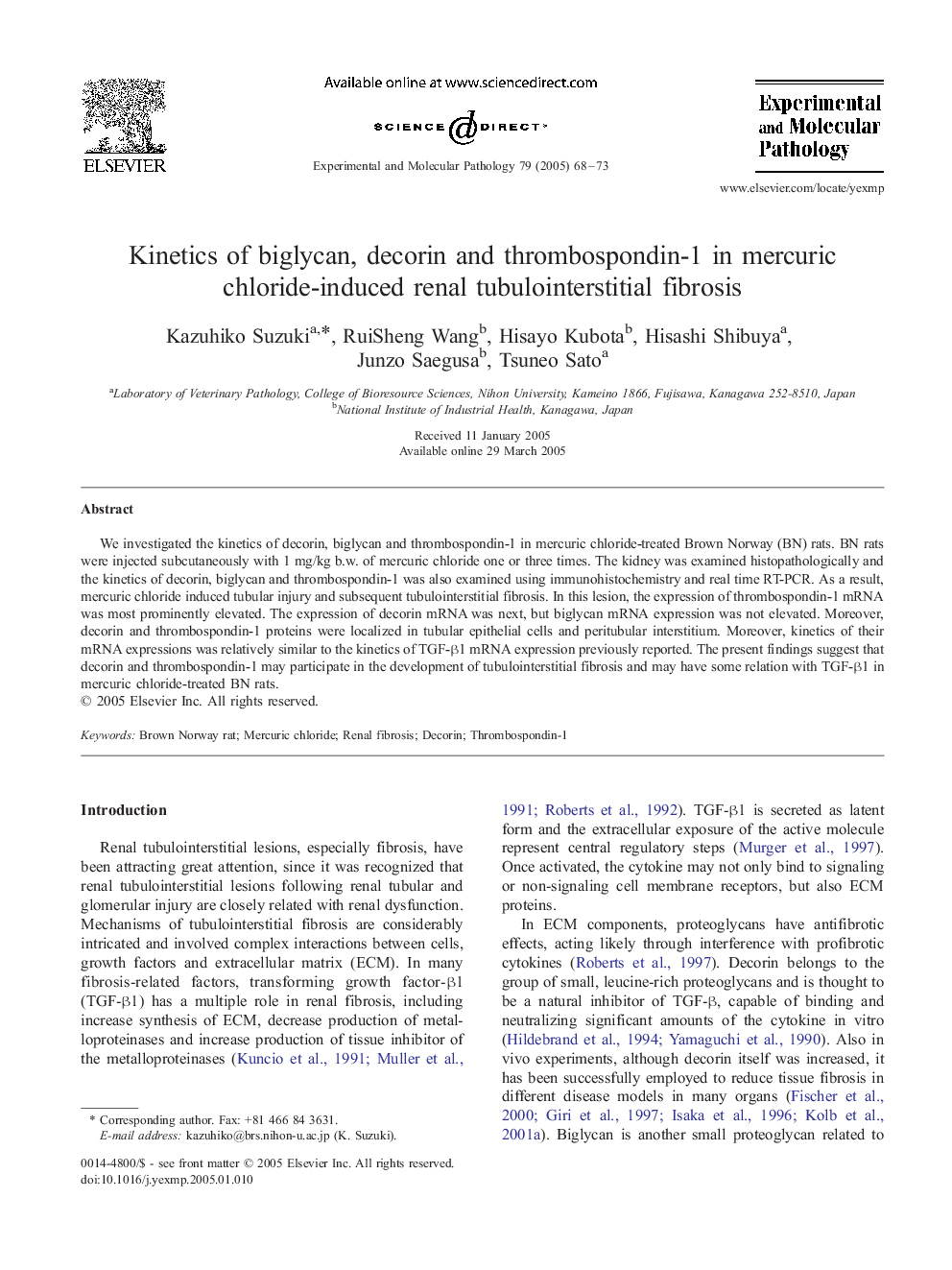| Article ID | Journal | Published Year | Pages | File Type |
|---|---|---|---|---|
| 9103026 | Experimental and Molecular Pathology | 2005 | 6 Pages |
Abstract
We investigated the kinetics of decorin, biglycan and thrombospondin-1 in mercuric chloride-treated Brown Norway (BN) rats. BN rats were injected subcutaneously with 1 mg/kg b.w. of mercuric chloride one or three times. The kidney was examined histopathologically and the kinetics of decorin, biglycan and thrombospondin-1 was also examined using immunohistochemistry and real time RT-PCR. As a result, mercuric chloride induced tubular injury and subsequent tubulointerstitial fibrosis. In this lesion, the expression of thrombospondin-1 mRNA was most prominently elevated. The expression of decorin mRNA was next, but biglycan mRNA expression was not elevated. Moreover, decorin and thrombospondin-1 proteins were localized in tubular epithelial cells and peritubular interstitium. Moreover, kinetics of their mRNA expressions was relatively similar to the kinetics of TGF-β1 mRNA expression previously reported. The present findings suggest that decorin and thrombospondin-1 may participate in the development of tubulointerstitial fibrosis and may have some relation with TGF-β1 in mercuric chloride-treated BN rats.
Related Topics
Life Sciences
Biochemistry, Genetics and Molecular Biology
Clinical Biochemistry
Authors
Kazuhiko Suzuki, RuiSheng Wang, Hisayo Kubota, Hisashi Shibuya, Junzo Saegusa, Tsuneo Sato,
